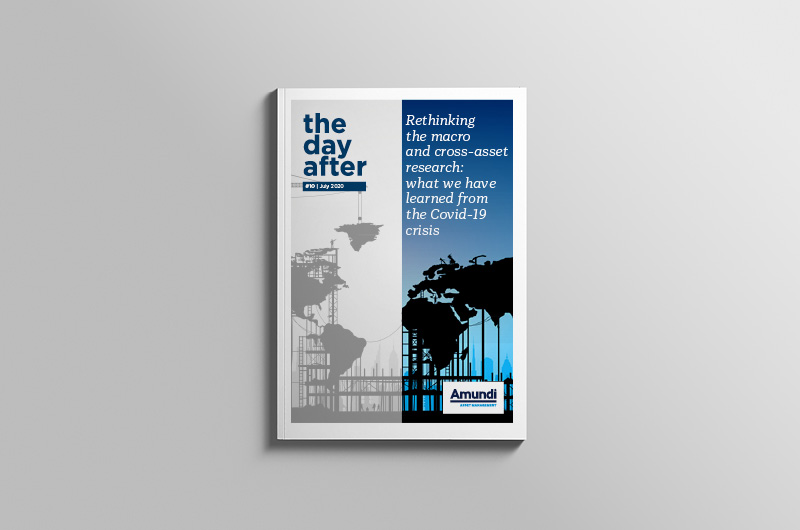Six must make changes to portfolios before 30 June
As the financial year comes to a close, it’s worth reflecting on what we have just experienced; not just in investment terms, but our health and community. COVID-19 will have long-lasting impacts on our lives and has resulted in one of the most unique investment environments in history. Markets experienced one of the fastest collapses in history, only be followed by the fastest recovery; this velocity of change seems to be a fact of life in the information age. In addition, bond markets experienced one of the most volatile periods ever seen, requiring the intervention by nearly every major central bank to the tune of trillions of dollars. Let’s take a breath….
With everything moving so quickly, it’s often difficult as a financial adviser or capital allocator to step back and take a ‘macro’ view of portfolios. There are so many spot-fires, opportunities, capital raisings or threats that the idea of adjusting currency or duration in bond portfolios moves further down the priority list. Yet history has shown it is these major asset allocation decisions that can drive substantial outperformance over the long-term. On this basis, there are six major changes I’ll be recommending to clients as the end of financial year approaches, in no particular order:
- Hedge currency exposure back to AUD – Every market participant has a view on the movements of the AUD, but as Warren Buffett suggests, “forecasts may tell you a great deal about the forecaster; they tell you nothing about the future.” As many ‘experts’ are predicting a stronger AUD as there are predicting a weaker AUD. On the positive, there is Australia’s (excluding Victoria’s) strong recovery from COVID-19, on the other is our worsening relationship with China. Here is a simple solution to help clients sleep at night: remove one risk from your portfolio that can be efficiently hedged, currency.
- Sell retail exposures – Despite the prospect of incredible returns should consumers flock back to retailers post-lockdowns, the sector simply carries too much risk to warrant a position in the short-term. The list of reasons is extensive, starting with news that some 50% of retail tenants simply aren’t paying their bills during the lockdown and extending to the many ‘renegotiations’ occurring where stores refuse to open, negotiate discounts or just back out of leases altogether. This has a long time to play out and the downside risk still outweighs the upside, in my view.
- Active over passive – Now is not the time to be adding passive index exposures to portfolios. By all historic measures both the ASX and S&P500 are over-valued. The issue, in my view, is the look-through on earnings. How many companies in the S&P500 or ASX200 can you confidently say will meet, let alone beat, consensus earnings estimates for FY20? Very few, given that many of the companies themselves have removed their outlook guidance. There are, however, many individual companies that are still growing – think Amazon, Apple, Microsoft, Afterpay – and many individual stocks appear much better bets than buying the whole basket.
- Reduce duration – The duration tailwind is dead. After several decades of falling interest rates (spanning my entire 15-year career), it appears we are finally near the bottom. 10-year bonds now offer interest of just 0.6%, and many corporates, like Woolworths or Amazon, are issuing similar debt at record low levels. Despite the implications for sharemarkets, interest rates can and will increase in the coming decades, and duration will lead to capital losses. Most bond indices have duration of around 6.5 years, meaning a 0.25% increase in rates will lead to a 1.6% capital loss.
- Go global – The global lockdown has exposed the Australian economy for its lack of diversity and reliance on China, for both travel, commodities and educational exports. Equity portfolios must reflect the changing nature of global trade and Australia’s position within this. My view is that global equities should be at least equal to if not exceed Australian exposures. Even more importantly, the focus needs to be on buying companies that have large addressable audiences, are growing their cash flow, have scaleable business models and are “capital-light.”
- Focus on total returns – What does a dividend deferral really mean? It seems that most of those companies, including our major banks that form the majority of many portfolios, have actually cut, rather than ‘deferred,’ their dividend payments. This will have huge impacts on retirees that rely on their dividends to fund their lifestyles. It’s time to make a change: we need to start focusing on long-term returns and actively managing cash flow in portfolios, not dividend flow. When sharemarkets are high, sell shares to pay pensions; when markets are low, sell bond holdings to pay pensions. The super system forces ever higher pension withdrawals that are simply unattainable when the focus is solely on income.










